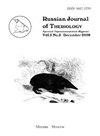社交游戏的变化反映了三种猫科动物在生物学和发育方面的差异
IF 0.6
4区 生物学
Q4 ZOOLOGY
引用次数: 4
摘要
幼年哺乳动物的社交游戏反映了行为发育,游戏可能受到发育时间和物种生物学差异的影响。我们比较了三种猫科动物的社交游戏频率变化:欧亚山猫(lynx lynx)、东北豹猫亚种(远东野猫)(Prionailurus bengalensis euptilurus)和家猫(Felis catus)。社交游戏通常被认为可以提高社会容忍度和凝聚力。群居家猫的接触和非接触社交游戏率与独居山猫和豹猫相同。而山猫与其他猫科动物的不同之处在于,在一个月至一个半月的年龄段,社交游戏率较低。两种类型的社交游戏正在发生不同的变化。非接触性游戏率归因于掠夺性技能的发展,在不同物种之间按小猫的年龄同步。而接触游戏的变化,归因于沟通的发展,对发展阶段是敏感的。与其他猫科动物相比,山猫的接触游戏加强得晚得多,这可能是由于断奶较晚。接触游戏率极低的时期恰逢兄弟姐妹自发攻击的开始,这是山猫独有的。经过一段时间自发的兄弟姐妹攻击后,山猫的接触游戏率上升到了其他猫科动物的水平。观察到的社会游戏变化和差异反映了猫科动物的发育时间和物种特异性特征。如何引用这篇文章:Antonevich A.L.、Alekseeva G.S.、Vasilieva N.A.、Pavlova E.V.、Loshchagina J.A.、Duplyakina S.Yu.、Naidenko S.V.2019。社交游戏的变化反映了三种猫科动物在生物学和发育方面的差异//俄罗斯J.Theriol。第18卷第2期。P.80–90.doi:10.15298/rusjtheriol.18.02本文章由计算机程序翻译,如有差异,请以英文原文为准。
Social play changes reflect differences in biology and development of three felids
Social play in young mammals reflects behavioral development, play can be affected by differences in development timing and species biology. We compared social play frequency changes in three felids: Eurasian lynx (Lynx lynx), Amur subspecies of leopard cat (Far-Eastern wildcat) (Prionailurus bengalensis euptilurus) and domestic cat (Felis catus). Social play is often expected to increase social tolerance and cohesion in a litter. Socially living domestic cat had contact and non-contact social play rates at the same level as solitary lynx and leopard cat. Whereas lynx differed from the other felids in lower social play rates at the age from one to one and a half month. Two types of social play were changing differently. Non-contact play rates, attributed to predatory skills development, were synchronized among species by age of kittens. Whereas contact play changes, attributed to communication development, were sensitive to the developmental stage. Contact play intensified in lynx much later than in the other felids probably due to a later onset of weaning. The period of extraordinary low contact play rates coincided with the onset of spontaneous sibling aggression, unique for lynx. After a period of spontaneous sibling aggression contact play rates in lynx increased to the level that other felids had. Observed social play changes and differences reflect development timing and species-specific features in felids. How to cite this article: Antonevich A.L., Alekseeva G.S., Vasilieva N.A., Pavlova E.V., Loshchagina J.A., Duplyakina S.Yu., Naidenko S.V. 2019. Social play changes reflect differences in biology and development of three felids //Russian J. Theriol. Vol.18. No.2. P.80–90. doi: 10.15298/rusjtheriol.18.2.02
求助全文
通过发布文献求助,成功后即可免费获取论文全文。
去求助
来源期刊

Russian Journal of Theriology
Agricultural and Biological Sciences-Animal Science and Zoology
CiteScore
0.90
自引率
33.30%
发文量
0
期刊介绍:
The Russian Journal of Theriology publishes papers on all aspects of mammalian biology: taxonomy, zoogeography, ecology, behavior, morphology, development, physiology, paleontology, and evolution. Studies of extinct as well as extant taxa are included. Reviews are also published; these may be invited by the Editorial Board.
 求助内容:
求助内容: 应助结果提醒方式:
应助结果提醒方式:


